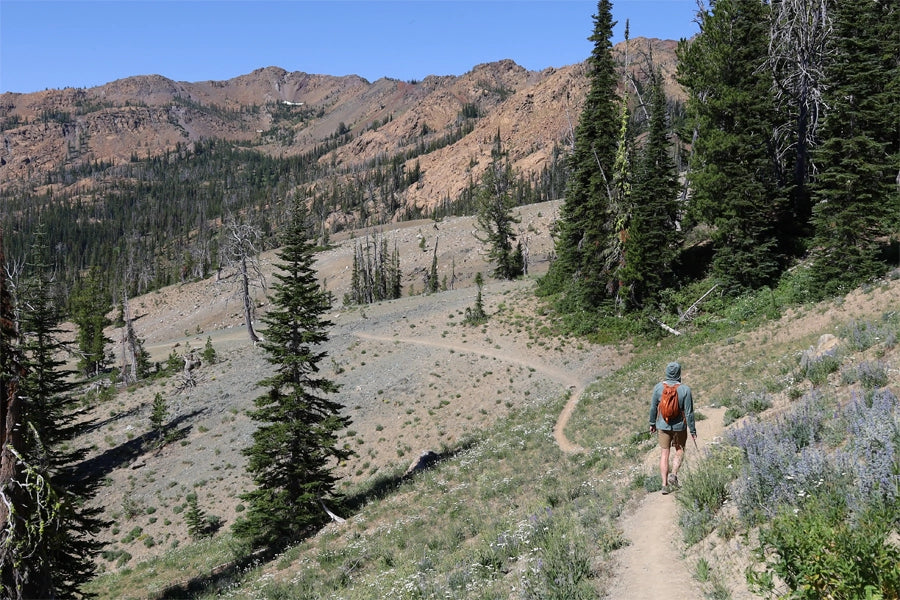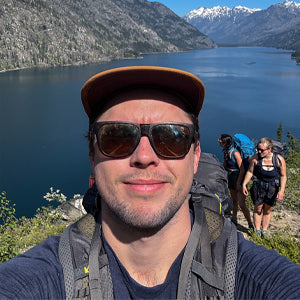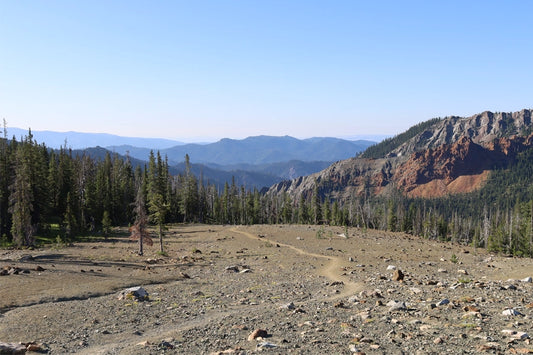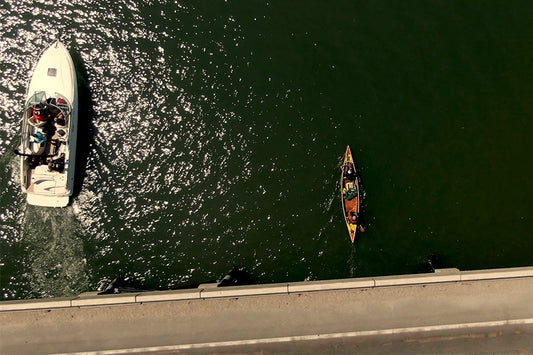8 TIPS FOR WARM WEATHER HIKING
It’s hot out there, folks. Even Seattle—famous for its rain and gloomy skies—isn’t immune to the sweaty, glove-like hug of summer. Triple-digit days in western WA are rare, but not unheard of (I’m looking at you, heatwave of June 2021), and August typically means you’re up against the peak temperatures of the season. Fortunately, there’s a thing or two you can do about it.
In preparation for my first ultramarathon in September, I’ve spent every single weekend of summer ‘24 outside in some capacity, whether on my feet, on two wheels, or in the water. And as the snooze button’s number one fan, these excursions often collide with the hottest part of the day. As such, I’ve picked up a few tricks to help me beat the heat this summer—here are eight tips that you can use to stay cool on your next warm-weather adventure.
Tip #1: Check the Forecast
Let’s start with a no-brainer: You should check the forecast before hitting any trail, regardless of the season. Temperature, humidity, and your odds of catching a storm are good factors to keep an eye on. You’ll need these data points to make informed decisions as you prepare for a day beyond the limits of cell service.
Tip #2: Know Your Trail
Will you be hiking through dense, shaded forest? How about exposed ridgeline? Understanding the terrain you’re traversing will help determine the gear you need to stay protected from the heat. Taking a step further, knowing where your water sources are and how much water to carry should be considered long before you arrive at the trailhead. These basic but crucial homework assignments can be the difference between a great day and a notably bad one.
Washington Trails Association and AllTrails are great resources to scope out routes, read trip reports, and glean insights that can help you stay ahead of the game.

(Keeping cool in my Geo-T Hoodie.)
Tip #3: Dress for Hot Weather
After performing some basic research, you can use this newfound knowledge to make educated decisions about what to wear. Generally speaking, you’ll want loose-fitting, moisture-wicking apparel in lighter colorways with UPF sun protection. For example, if I know that I’ll be primarily under the protection of trees, I’ll opt for a breathable short sleeve like the SolarSwift Tech-T or FirstSun Short Sleeve. Both options feel great against the skin, handle moisture well and are purpose-built for the demands of outdoor life. I prefer the freedom of short sleeves if I don’t need full-length protection.

(The SolarSwift Short Sleeve Tech-T in Big Sky Blue.)
If I’m hiking in direct sunlight for extended periods of time, my Geo-T Hoodie is guaranteed to make an appearance. Its knit honeycomb design creates a breathable, moisture-wicking fabric that dries remarkably fast, which in turn cools me off while the UPF 50 sun protection shields me from harmful UV radiation. When you can’t rely on trees for shade, you have to create your own.

(One of many runs in my Geo-T Hoodie.)
Tip #4: Hydrate
Adequate hydration is a seemingly obvious rule of thumb that can be easy to get wrong in extreme conditions. I look for routes with multiple lakes, streams, and other water sources that allow me to filter water at will. When water sources are few and far between, you’ll want to have enough capacity to carry water for the long haul—on my long runs, I have the capacity to carry up to 4 liters at any given moment (though I rarely need to). I’m not in the business of rationing water.
Bonus points are awarded for pre-hydrating the day before and hours leading into your excursion. This means you’ll start your day in a fully hydrated state, giving your body an edge in the battle against dehydration.
Electrolyte tabs will further enhance your hydration game during long, high-output days. These tabs replenish the electrolytes, sodium and other essential minerals you sweat out during any given activity, helping to prevent cramps, retain water and keep dehydration at bay.
Tip #5: The Hat Dunk

In terms of instant gratification, the hat dunk offers the best bang for your buck. For best results, find a glacier-chilled body of water and give ‘er a plunge.
Tip #6: Hike in the Morning / Evening

(Sunrise over the Puget Sound.)
Of course, one way to beat the heat is to avoid it altogether. With an early enough start, you’ll be off the trail before the peak heat of the day, saving you the hassle. As a reward, you’ll be greeted by the blue, pink and orange wash of sunrise. We call this a win-win.
If you’re an aspiring morning person like me, you can reap the same benefits by hiking in the afternoon. This will limit your adventure to some extent, but at least you got those extra five minutes.
Tip #7: Train Your Heat Tolerance
When the heat is unavoidable—think summertime marathons, thru-hikes, and related activities—you’ll want to carefully introduce heat training into your regimen to improve your heat tolerance. Fortunately for us, the human body is absurdly adaptable, and calculated outings in the heat—especially coupled with a sauna—can make all the difference come race day. Just don’t expect to hold your typical paces, which leads me to my final tip.
Tip #8: Listen to Your Body
Lastly, and most importantly, listen to your body. I’m no doctor, but if you’re experiencing dizziness, nausea, rapid heart rate, a headache (the list goes on), use your dehydrated brain and don’t ignore these symptoms. Don’t be afraid to stop, take a swig and turn around if necessary. There will be another day.








0 Comments